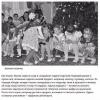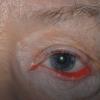Sound and noise protection methods. Methods and means of protecting a person from noise. How to protect yourself from outside street noise
Noise control is carried out various methods and means:
1. reduction in the power of sound radiation of machines and units;
2. localization of the effect of sound by constructive and planning solutions;
3. organizational and technical measures;
4. treatment and preventive measures;
5. the use of personal protective equipment for workers.
Conventionally, all means of protection against noise are subdivided into collective and individual.
Collective means of protection:
Means that reduce noise at the source;
Means that reduce noise on the way of its propagation to the protected object.
Noise reduction at the source of occurrence is the most effective and economical, (allows you to reduce noise by 5-10 dB):
Elimination of gaps in gear connections;
The use of globoid and chevron connections as less noisy;
Widespread use, if possible, of plastic parts;
Elimination of noise in bearings;
Replacement of metal cases with plastic ones;
Balancing parts (eliminating imbalance);
Elimination of distortions in bearings;
Replacement gears on V-belts;
Replacement of rolling bearings for plain bearings (15dB), etc.
To reduce noise in reinforcing shops, it is advisable: the use of hard plastics to cover surfaces in contact with reinforcing wire; installation of elastic materials in places where reinforcement falls; the use of vibration-absorbing materials in the enclosing surfaces of machines.
Technological measures to reduce the noise level in the source include: reducing the amplitude of oscillations, speed, etc.
The means and methods of collective protection that reduce noise along the path of its propagation are divided into:
Architectural - planning;
Acoustic;
Organizational and technical.
Architectural and planning measures to reduce noise
1. From the point of view of noise control in urban planning, when designing cities, it is necessary to clearly divide the territory into zones: residential (residential), industrial, utility-storage and external transport, in compliance with the standards of sanitary protection zones when developing the general plan.
2. The correct layout of industrial premises should be made taking into account the isolation of the premises from external noise and noisy industries. Industrial buildings with noisy technological processes should be placed on the leeward side in relation to other buildings and the residential area, and always with their end faces facing them. (The mutual orientation of the buildings is decided so that the sides of the buildings with windows and doors are against the blind sides of the buildings. The window openings of such workshops are filled with glass blocks, and the entrance is made with vestibules and sealing around the perimeter.
3. The most noisy and harmful industries are recommended to be completed in separate complexes with gaps between separate nearby objects in accordance with sanitary standards. Indoors are also combined with noisy technologies, limiting the number of workers exposed to noise. There must be gaps between buildings with noisy technology and other buildings of the enterprise (at least 100 m). Gaps between workshops with noisy technology and other buildings should be planted. The foliage of trees and shrubs serves as a good noise absorber. New railway lines and stations should be separated from residential buildings by a protective zone with a width of at least 200 m. When installing noise barriers along the line, the minimum width of the protective zone is 50 m. Residential buildings should be located at a distance of at least 100 m from the edge of the carriageway of high-speed roads.
4. Noisy workshops should be concentrated in one or two places and separated from such premises by gaps or rooms in which people stay for a short time. In workshops with noisy equipment, it is necessary to properly place the machines. They should be placed in such a way that elevated levels Noise was observed on the minimum area. Between areas with different levels of noise, partitions are arranged or utility rooms, warehouses for raw materials, finished products, etc. are placed. For enterprises located within the city, the most noisy premises are located in the depths of the territory. Rational placement of acoustic zones, driving mode Vehicle and traffic flows.
5. Creation of noise protection zones.
Levels sound pressure, created on the territory of residential development by noise sources of enterprises (machines, equipment, etc.), are determined by the formula:
where R – noise attenuation at distance r, dB;
L m1 – noise intensity level at a distance of 1 m from the source, dB; r is the distance from the noise source to the calculated point, m.
Let us determine, for example, the noise level of the ventilation unit engine at a distance of 100 m, if the noise at a distance of 1 m from the source is 130 dB.
Get: dB
Acoustic methods of noise protection. These include: sound insulation, sound absorption, sound suppression (noise suppression).
Soundproofing- this is the ability of structures enclosing or dividing rooms, or their elements, to weaken the sound passing through them.
Types of sound insulation and the effectiveness of sound insulation.
When sound energy meets a fence, part of it passes through the fence, part of it is reflected, part is converted into thermal energy, part is radiated by a vibrating barrier, and part is converted into body sound propagating inside the fence in the room.
The soundproofing quality of the fence is characterized by the sound transmission coefficient :
(2.5.11)
where l pr, P pr - intensity and sound pressure of the transmitted sound;
l pad, P pad - intensity and sound pressure of the incident sound.
The soundproofing ability of the structure is the higher, the higher its surface density. Effective soundproofing materials are: concrete, wood, dense plastics, etc.
To create normal conditions at the workplace, you need to know by what amount you need to reduce the sound pressure. To determine the amount of sound insulation, you need to measure the level of sound pressure or intensity from the source and compare it with the standard value (GOST 12.1. 001-89; DSN 3.3.6-037-99). For tonal and impulse noise, as well as noise generated by air conditioning, ventilation and air heating, the value of Lg should be reduced to K = 5 dB (Fig. 2.5.3.).
When calculating the isolation of a room from external noise, it is very important to know by what amount the sound pressure needs to be reduced. As a criterion, the value of sound insulation is proposed:
, dB , (2.5.12)
where L 1 - the noise level inside the room, dB;
L 2 - noise level outside the room, dB.
However, formula (2.5.11.) does not give a clear idea of whether such noise reduction is effective or not, from the point of view of labor protection.
The choice of the necessary sound insulation is made on the basis of the noise level allowed by the standards. The insulating wall and casing should create such sound insulation that the noise penetrating through them does not stand out against the general background. To do this, the noise from the source must be reduced by 3 ... 5 dB against the permissible by the standards:
, dB(2.5.13)
where D is the required sound insulation value, dB
L A is the level from the source, dB;
LG- allowable level noise according to the standards, dB.
Now, applying the formula (2.5.13), we know how many dB it is necessary to reduce the sound pressure. Based on the result obtained, it is necessary to choose an effective sound insulation. The insulation structure is calculated so that its soundproofing capacity of the structure (R) in dB would be equal to or greater than the required sound insulation value, i.e. R D.
When the frequency of vibrations of the medium is more than 100 Hz, the efficiency of sound insulation depends on the mass of the structure ( mass law ).
With an increase in the mass of the structure M increase the isolation efficiency of noise control. Sound penetrates through vibrations, and the heavier, more massive the barrier, the more difficult it is to bring it into vibration. The protective structures of noisy workshops are made massive, thickened from dense materials or from hollow blocks, or multi-layered.
To determine the soundproofing ability of fences, the following formula is recommended:
(2.5.14.)
where is the sound conductivity coefficient, which is the ratio of the sound energy that has passed through the structure and incident on the structure.
Soundproof walls and ceilings are used to isolate noisy rooms. The soundproofing ability of such fences is determined by the following formulas:
· to determine between two rooms
(2.5.15)
· for a solid and uniform fence with a structure weight of up to 200 kg / m 2, the soundproofing ability is equal to:
(2.5.16)
· the same with a mass of more than 200 kg / m 2
(2.6.17)
· for a double fence with an air gap of 8…10 cm:
(2.5.18)
where M is the mass of the structure, kg / m 2;
M 1, M 2 - the mass of the walls of the double fence, kg / m 2;
R - soundproofing ability of the fence, dB;
L 1 , L 2 - the average value of the sound pressure level in noisy and quiet rooms, dB;
S - fence area, m 2;
A is the total sound absorption in a quiet room, equal to the sum of the products of all areas and their sound absorption coefficients, m 2.
If the fence itself is made of sound-absorbing material, then the noise attenuation value of the sound-proofing structure is determined by the following relationship:
, (2.5.19)
where is the sound absorption coefficient of the construction material.
The soundproofing ability of the fence depends on the geometric dimensions, the number of layers of soundproofing material, its weight, elasticity and frequency composition of the noise.
Sound insulation of single-layer fences. Fences (structures) are considered single-layer if they are made of a homogeneous building material or consist of several layers of different materials with their own acoustic properties, rigidly connected over the entire surface (brick, concrete, plaster, etc.)
The sound insulation of enclosing structures depends on the occurrence of resonant phenomena in them. The area of resonant vibrations of fences depends on the mass and rigidity of the fence, the properties of the material. In general, the frequency of most building single-layer structures is below 50 Hz. Therefore, at low frequencies of 20 ... 63 Hz - I range, the sound insulation of fences is insignificant due to large vibrations of the fence near the first frequencies of natural vibrations (failure of sound insulation).
At frequencies that are 2–3 times higher than the natural vibration frequency of the fences (frequency range II), sound insulation depends on the mass per unit area of the fence and the frequency of the incident waves, and the rigidity of the fence has practically no effect on sound insulation:
, (2.5.20)
where R is sound insulation, dB;
M - weight of 1 m 2 of the fence, kg;
- sound frequency, Hz.
Doubling the weight of the fence or the frequency of the sound results in a 6dB increase in sound insulation.
When the frequency of forced vibrations (incident sound wave) coincides with the vibration frequency of the fence (the effect of wave coincidence), the spatial resonance of the fence manifests itself, while the sound insulation is sharply reduced. It happens like this: starting from a certain sound frequency 0.5 cr, the amplitude of the fence oscillations increases sharply (range III).
The highest frequency of sound (Hz), at which a wave coincidence appears, is called critical:
, (2.5.21)
where b is the thickness of the fence, cm;
- material density, kg/m 3 ;
- dynamic modulus of elasticity of the fence material, MPa.
Multi-layered soundproof barriers. To increase sound insulation and reduce the weight of the fence, multilayer fences are used. To do this, the space between the layers is filled with porous fibrous materials and an air gap of 40–60 mm wide is left. The soundproofing ability is influenced by the mass of the fencing layer M 1 and M 2 and the stiffness of the bonds K, the thickness of the layer of porous material or the air gap (Fig. 2.5.4)
The lower the elasticity of the intermediate material, the less the transmission of vibrations to the second enclosing layer, and the higher the sound insulation (in practice, a double enclosure can reduce the noise level by 60 dB).
Sound absorption. In noisy rooms, the sound level increases significantly due to its reflection from building structures and equipment. It is possible to reduce the proportion of reflected sound by applying a special acoustic treatment of the room, which consists in lining the internal surfaces with sound-absorbing materials.
When sound energy E falls on the surface, one part of the sound energy is absorbed (E pog), the other part is reflected (E neg).
The ratio of absorbed energy to incident energy is the sound absorption coefficient of this surface:
, (2.5.22)
Sound absorption by a material is due to internal friction in the material and the conversion of sound energy into heat. Depends on the thickness of the absorbing layer, the type of material and the characteristics of the sound. Sound-absorbing materials are those in which .
Sound-absorbing structures are conditionally divided into three groups: porous sound-absorbing, resonant, piece (volumetric) sound absorbers. In construction, porous sound-absorbing materials are most often used. The structures of them are made in the form of a layer of the required thickness. Resonant structures are perforated screens. Common building materials: concrete, brick, stone, glass, are poor sound absorbers. Porous, fibrous materials with low density absorb sound most effectively. Sound absorption at enterprises is achieved by lining walls and ceilings with fibrous or porous materials (p = 80 ... 100 kg / m 3), fiberglass (p = 17 ... m 3), concrete and expanded clay blocks, slabs of perforated pavinol of the Aviapol brand, etc. To fix these materials, these materials are covered with aluminum perforated panels, fine-mesh wire mesh, fiberglass, etc. Sound-absorbing cladding reduces indoor noise by 6-10 dB.
The sound absorption of materials depends on the thickness. So, the thickness of cotton, wool is 400 - 800 mm, loose felt - 180 mm, dense felt - 120 mm, mineral wool - 90 mm, porous gypsum - 6 mm.
Sound-absorbing materials effectively absorb sound of medium and high frequencies. To absorb low-frequency noise, an air gap is created between the sound-absorbing lining and the wall.
Often, piece absorbers are used, made in the form of three-dimensional bodies made of sound-absorbing material. They are suspended from the ceiling near noise sources. Used for sound absorption different kinds structures. Such structures consist of one or more layers of materials rigidly bonded to each other. The sound absorption capacity of such a construction depends on the sound absorption coefficient of each layer.
In the case when a soundproof fence has sound-absorbing material in its design, the effectiveness of the fence depends on the sound absorption coefficient and the sound insulation of the walls of the casing or structure. To evaluate the effectiveness of such a design, it is necessary to know the mass of the walls of the casing or structure M in kg / m 2, the oscillation frequency in Hz and the coefficient , which represents the ratio of the absorbed sound energy to the incident. The sound absorption coefficient for most porous materials at medium and high frequencies is 0.4 - 0.6. Porous sound-absorbing materials are made in the form of plates and attached directly to the wall or to the structure. Granular, porous materials are made from mineral chips, gravel, pumice, kaolin, slag, etc., using cement or liquid glass as a binder. These materials are used to reduce noise in industrial premises, in the corridors of public and other buildings, foyers, stairwells. Sound-absorbing, fibrous, porous materials are made from wood fiber, asbestos, mineral wool, glass or nylon fiber. These materials are mainly used to improve the acoustic qualities in cinemas, studios, auditoriums, kindergartens, nurseries, restaurants, etc.
The decrease in the sound pressure level in an acoustically treated room can be determined by the dependence:
, (2.5.23)
where B 2 and B 1 - permanent premises before and after its acoustic treatment, determined according to SNIP II-12-77,
, (2.5.24)
where B 1000 is the constant of the room at the geometric mean frequency of 1000 Hz, m 2, is determined depending on the volume of the room;
- frequency multiplier, determined by the reference tables (varies from 0.5 to 6 depending on the volume of the room and the sound frequency). Maximum sound absorption can be obtained when facing at least 60% of the area of the room.
Partial isolation of workplaces can be done using screens. The screening method is used when other methods are ineffective or unacceptable from a technical and economic point of view. The screen is an obstacle to the propagation of airborne noise, behind which a sound shadow appears (Fig. 2.5.3.). The screens are made of steel or aluminum plates 1…3 mm thick, covered with sound-absorbing material on the side of the noise source. The acoustic efficiency of the screen depends on its shape, size, location relative to the noise source and the workplace. Efficiency k e screen
where, - frequency; h - screen height; r is the distance from the screen to the workplace; l– screen width; d is the distance from the screen to the noise source.
The sound absorption efficiency of the screen depends on the ratio of the distance between the source and the calculated point ( l) to the length (A), width (B) and height (H) of the room. The effective operation of the screen will be ensured by l/A, l/B, l/H is less than 0.5. When the ratio is equal to 1, the use of the screen is ineffective. Efficiency can be improved by increasing the size of the screen and bringing it as close as possible to the noise source. The English company Acousticabs has developed a noise-absorbing screen for industrial buildings. It can be used as a temporary partition to isolate rooms.
To combat noise, they also use suspended or piece sound absorbers, cubic or conical in shape, made of perforated plywood, plastic, metal, filled with a porous sound-absorbing material. The effectiveness of sound absorption is evaluated sound absorption area. One of the areas of soundproofing is the use of soundproof booths that allow remote control of production. As soundproof cabins, it is recommended to use standard fixed reinforced concrete cabins for the bathrooms of residential buildings. They are installed directly on the floor on rubber shock absorbers. The inside is lined with sound-absorbing boards and double-glazed. When designing industrial premises, it must be remembered that with an increase in the volume of the premises, the noise level decreases. However, for sound absorption great importance renders the height (H) of the room than its volume. With the ratio of the distance between the noise source and the calculated point ( l) to the room height (H) equal to l/H = 0.5, sound absorption is 2…4 dB; at l/H = 2…10 dB; at l/H = 6…12 dB.
Fig.2.5.1. Soundproofing means:
1 - soundproof fence; 2 - soundproof cabins and control panels; 3 - soundproof casings; 4 - acoustic screens; IS - noise source
To reduce the noise generated by the intake and exhaust systems of exhaust gases of internal combustion engines, ventilation units, compressors, etc., apply noise silencers. They are absorption, reactive and combined ( rice. 2.5.2).
Absorption silencers reduce noise by 5 to 15 dB due to the absorption of sound energy by sound-absorbing materials that line their inner surface. They can be tubular, plate, honeycomb, screen. The latter are installed at the gas outlet to the atmosphere or at the inlet to the channel. Reactive silencers reduce noise in resonant chambers by 28 - 30 dB (Fig. 2.5.3.)
Organizational and technical measures to reduce noise. Noise reduction with the help of organizational and technical measures is carried out by changing technological processes, a remote control and automatic control device, timely scheduled preventive maintenance of equipment, the introduction of rational modes of work and rest.
Noise protection equipment. In cases where technical means it is not possible to reduce noise and vibration to acceptable limits, personal protective equipment is used. To reduce noise DSN 3.3.6-037-99 recommends the use of personal protective equipment in accordance with GOST 12.1.003-88; for ultrasound (GOST 12.1.001-89). Personal protective equipment against noise should have the following basic properties:
reduce the noise level to acceptable limits at all frequencies of the spectrum;
do not put excessive pressure on the auricle;
do not reduce the perception of speech;
do not muffle the sound signals of danger;
meet hygiene requirements.
Personal protective equipment for hearing organs includes internal and external anti-noise (antiphons), anti-noise helmets.
Cotton, gauze, sponge, etc., inserted into the auditory canal, are considered the simplest of internal anti-noise agents. Cotton wool reduces noise by 3 - 14 dB in the frequency band from 100 to 6000 Hz; cotton wool with wax - up to 30 dB. Safety plugs (ear plugs "Earplugs") are used, tightly closing the auditory canal and reducing noise by 20 dB (Fig. 2.5.4.).
External anti-noise means include antiphons that cover the auricle. Some anti-noise designs provide noise reduction up to 30 dB at frequencies of the order of 50 Hz and up to 40 dB at frequencies of 2000 Hz. Antiphons tire a person. Currently, antiphons have been developed that have a selective ability, i.e. protecting the hearing organs from the penetration of sound of unwanted frequencies and transmitting sounds of a certain frequency. Recently, anti-noise headphones PSh-00, anti-noise helmet VTsNIIOT-2 have been used. They are very effective means with high-frequency noise, however, it should be borne in mind that they are not very convenient to use and can only be used temporarily. At noise levels above 120 dB, headphones and earbuds do not provide the necessary noise attenuation.
Topics: Welding safety.
Noise protection divided into collective and individual (PPE). Of the former, soundproofing, sound absorption and noise silencers are most often used.
Noise protection measures are developed or selected on the basis of an acoustic calculation, which allows to determine at the design stage the expected sound pressure levels (SPL) at design points with known noise sources (SN) and their noise characteristics, or noise measurements (in the field). Required noise reduction, dB, Mtr = L - Ladm, where L - calculated or measured SPL; Ladd - allowable SPL. The method of acoustic calculation is known from the literature.
1) Soundproofing. The means of soundproofing (see Figure 1) include: 1 - soundproof fences, 2 - soundproof cabins and control panels, 3 - soundproof casings, 4 - acoustic screens. They are used when it is necessary to significantly reduce the intensity of direct sound in the workplace.
Soundproof fences(walls, ceilings, windows, etc.) are characterized by sound insulation R (dB) of airborne noise. Required sound insulation Rtp (dB) of the fence adjacent premises is defined as R tr = L w - L add + 10 lg S ogp - 10 Ig V and, where L w - measured or calculated SPL in a noisy room; L add - allowable SPL in an isolated room, dB; B and - the constant of the isolated room (m 2), determined from the reference data; Sorp - area of the fence, m 2.
Calculation and design of soundproof enclosures is carried out taking into account R tr . There are two possible ways to solve this problem: 1) the use of experimental data on the sound insulation of fences R ogp ≥ R tr at standard geometric mean frequencies of octave bands; 2) calculated in accordance with SNiP II-12-77 definition of R.
Rice. 1. Means of soundproofing.
For approximate calculations of a single-layer fence, use the formula
R \u003d 20 lg mƒ- 47.5,
where m is the surface density of the fence material, kg / m 2 (t \u003d ρh, where ρ is the density of the material, kg / m 3; h is the thickness of the fence, m); ƒ - sound frequency, Hz.
Soundproof covers made of steel, duralumin and other materials. The inner surface of the casing walls must be lined with sound-absorbing material (SAM). For a continuous sealed casing, its required sound insulation R.oj.tr \u003d L - Ladm is provided due to the sound insulation of the casing walls (dB):
R \u003d R skin.tr - 10 lg α region,
where α region is the reverberation coefficient of sound absorption of the used ZPM (Table 18.13).
Calculation of sound insulation of casings can be found in reference books.
Soundproof booths are used to place remote controls in them, workplaces in noisy industrial premises.
Required noise reduction by the cabin R cab.tr = L w - L add, where L w - octave sound pressure level at the cabin installation workplace, dB; L admissible SPL at workplaces in cabins, dB.
The required sound insulation of the R i -th element of the cabin (wall, window, door) is determined by the formula R tr i \u003d L w -10 lg B to + 10 lg S i - L add + 10 lg n, where B to is the constant of the cabin, m 2; S i - area of the i-th element of the cabin, through which the noise penetrates into the cabin, m 2; n is the number of identical elements, such as windows.
Acoustic screens most often they are made in a flat and U-shaped form from metal sheets 1 ... 2 mm thick with a mandatory lining with a layer of sound-absorbing material on the surface facing the noise source. The shielding efficiency is the higher, the greater the ratio of the width and height of the screens and the sound wavelength λ = c / ƒ, m (c is the speed of sound in air, c = 340 m/s), so it is advisable to use them to reduce medium and high-frequency noise . The method for calculating acoustic screens has been published.

Rice. 2. Soundproof cabin.
2) Noise protection :
Sound absorbers. These are sound-absorbing claddings and piece sound absorbers installed in the room during its acoustic treatment. The decrease in SPL in the room for workplaces located in the zone of reflected sound is determined by the formula ΔL = 10 lg , dB, where V and ψ are, respectively, the room constant and the coefficient before acoustic treatment; In 1 and ψ 1 - the same, after processing. Sound-absorbing facings are used in the form of acoustic plates "<Акмигран», «Акминит» и др.) и слоев пористоволокнистых материалов (стеклянного или базальтового супертонкого волокна, минеральной ваты и др.) в защитной оболочке из стеклоткани типа Э3-100 с перфорированным покрытием (металлическим, гипсовым и др.). Реверберационные коэффициенты звукопоглощения α обл для некоторых конструкций даны в табл. 18.13.
To reduce noise, the workplace of the operator of the thermal cutting installation must be enclosed with a soundproof cabin-screen, the diagram of which is shown in fig. 2. The cabin wall is made of a solid metal sheet (1) with a thickness of 1.5 ... 2 mm with a sound-absorbing lining 2 with a thickness of 50 mm, located on the outer and inner sides of the cabin and covered with a layer of fiberglass type E3-400 and a metal perforated sheet 3 with a thickness 1 to 1.5 mm (should have a perforation ratio of ≥20%). It is also possible to install flat acoustic baffles between the workstation and . In this case, the screens should only be used in combination with sound-absorbing lining of the production room.
To reduce noise in the workshop, rotating and multi-station generators must be soundproofed or taken out of the workplace or area, premises.
3) Noise protection : Noise mufflers. To reduce the noise of fan and compressor installations, plate, tubular, and cylindrical absorption silencers are used (Fig. 3). Silencer designs are selected depending on the transverse dimensions of the air ducts, the allowable air flow velocity, and the required SPL reduction. Silencers with porous elements are used to reduce the noise of compressed air discharge systems.

Rice. 3. Tubular silencer: J - perforated sheet; 2 - sound-absorbing material; 3 - body.
The fight against noise in production is carried out in a comprehensive manner and includes measures of a technological, sanitary-technical, therapeutic and prophylactic nature.
The classification of means and methods of noise protection is given in GOST 12.1.029-80 SSBT “Means and methods of noise protection. Classification”, SNiP II-12-77 “Noise protection”, which provide for noise protection by the following construction and acoustic methods:
a) soundproofing of enclosing structures, sealing the porches of windows, doors, gates, etc., the installation of soundproof cabins for personnel; shelter of noise sources in casings;
b) installation of sound-absorbing structures and screens in the premises on the path of noise propagation;
c) the use of aerodynamic noise silencers in internal combustion engines and compressors; sound-absorbing linings in the air ducts of ventilation systems;
d) the creation of noise protection zones in various places where people are located, the use of screens and green spaces.
Noise attenuation is achieved by using elastic pads under the floor without their rigid connection with the supporting structures of buildings, by installing equipment on shock absorbers or specially insulated foundations. Sound absorption means are widely used - mineral wool, felt boards, perforated cardboard, wood-fiber boards, fiberglass, as well as active and reactive silencers.
Silencers aerodynamic noise are absorption, reactive (reflex) and combined. In absorption
In mufflers, noise attenuation occurs in the pores of the sound-absorbing material. The principle of operation of reactive silencers is based on the effect of sound reflection as a result of the formation of a “wave plug” in the silencer elements. Combined mufflers both absorb and reflect sound.
Soundproofing is one of the most effective and common methods for reducing industrial noise along the way of its propagation. With the help of soundproofing devices, it is easy to reduce the noise level by 30 ... 40 dB. Effective soundproofing materials are metals, concrete, wood, dense plastics, etc.
To reduce noise in the room, sound-absorbing materials are applied to the internal surfaces, and piece sound absorbers are also placed in the room.
Use of personal noise protection equipment appropriate in cases where collective protection and other means do not provide noise reduction to acceptable levels.
PPE can reduce the level of perceived sound by 0 ... 45 dB, with the most significant noise suppression observed in the high frequency region, which is most dangerous to humans.
Personal protective equipment against noise is divided into anti-noise headphones that cover the auricle from the outside; earmolds that cover the external auditory canal or adjacent to it; anti-noise helmets and helmets; anti-noise suits. Anti-noise liners are made of hard, elastic and fibrous materials. They are single and multiple use. Anti-noise helmets cover the entire head, they are used at very high noise levels in combination with headphones, as well as anti-noise suits.
The fight against noise in the workplace is carried out comprehensively and includes the following measures:
· technological;
· sanitary-technical;
therapeutic and prophylactic.
The classification of means and methods of noise protection is given in
GOST 12.1.029-80 SSBT “Means and methods of noise protection. Classification”, SNiP II-12-77 “Protection from noise” that provide protection against noise the following construction and acoustic methods :
a) soundproofing of enclosing structures, sealing
a ditch for windows, doors, gates, etc., the installation of soundproof booths for
personnel; shelter of noise sources in casings;
b) installation in rooms in the path of sound noise propagation
absorbing structures and screens;
c) the use of aerodynamic noise silencers in engines
internal combustion and compressors; sound-absorbing linings
air paths of ventilation systems;
d) creation of noise protection zones in various locations
people, using screens and green spaces.
Noise attenuation is achieved by using elastic pads under the floor without their rigid connection with the supporting structures of buildings, by installing equipment on shock absorbers or specially insulated foundations. Sound absorption means are widely used - mineral wool, felt boards, perforated cardboard, fibreboard, fiberglass, as well as active and reactive silencers (Fig. 4).
Silencers aerodynamic noise are absorption, reactive (reflex) and combined. In absorption silencers, the attenuation of noise occurs in the pores of the sound-absorbing material.
Rice. 4. Silencers:
a - absorption tubular type; b - absorption honeycomb type;
d - absorption screen type; e - reactive chamber type; e - resonant;
g - combined type;
1 - perforated tubes; 2 - sound absorbing
material; 3 - fiberglass; 4 - expansion chamber; 5 - resonant chamber
The principle of operation of reactive silencers is based on the effect of sound reflection as a result of the formation of a “wave plug” in the silencer elements. Combined mufflers both absorb and reflect sound.
Soundproofing is one of the most effective and common methods for reducing industrial noise along the way of its propagation. With the help of soundproofing devices (Fig. 5), it is easy to reduce the noise level by 30 - 40 dB. Effective soundproofing materials are metals, concrete, wood, dense plastics, etc.
Rice. 5. Schemes of soundproofing devices: a - soundproofing partition; b - soundproof casing;
c - soundproof screen; A - zone of increased noise; B - protected zone;
1 – noise sources; 2 - soundproof partition; 3 - soundproof casing; 4 - soundproof lining; 5 - acoustic screen
To reduce noise in the room, sound-absorbing materials are applied to the internal surfaces, and piece sound absorbers are also placed in the room.
Sound-absorbing devices are porous, porous-fibrous, with a screen, membrane, layered, resonant and volumetric. The effectiveness of the use of various sound-absorbing devices is determined as a result of acoustic calculation, taking into account the requirements of SNiP II-12-77. To achieve the maximum effect, it is recommended to clad at least 60% of the total area of the enclosing surfaces, and place volumetric (piece) sound absorbers as close as possible to the noise source.
It is possible to reduce the adverse impact of noise on workers by reducing the time they spend in noisy workshops, rationally distributing the time of work and rest, etc. The working hours of adolescents in noise conditions are regulated: they must take mandatory 10-15-minute breaks, during which they must rest in specially allocated rooms outside the noise exposure. Such breaks are arranged for adolescents working the first year, every 50 minutes - 1 hour of work, the second year - after 1.5 hours, the third year - after 2 hours of work.
Areas with sound levels or equivalent sound levels above 80 dBA should be marked with safety signs.
The main sources of vibration (mechanical) noise of machines and mechanisms are gears, bearings, colliding metal elements, etc. It is possible to reduce the noise of gears by increasing the accuracy of their processing and assembly, by replacing the gear material, by using bevel, helical and herringbone gears. It is possible to reduce the noise of machine tools by using high-speed steel for the cutter, cutting fluids, replacing metal parts of machine tools with plastic ones, etc.
To reduce aerodynamic noise, use special noise dampening elements with curved channels. Aerodynamic noise can be reduced by improving the aerodynamic characteristics of machines. Additionally, soundproofing and silencers are used.
Acoustic treatment obligatory in noisy workshops of machine-building plants, workshops of weaving factories, machine rooms of machine counting stations and computer centers.
A new method of noise reduction is "anti-sound" method(equal in magnitude and opposite in phase sound). As a result of the interference of the main sound and "anti-sound" in some places of a noisy room, silence zones can be created. In a place where it is necessary to reduce noise, a microphone is installed, the signal from which is amplified and emitted in a certain way by the speakers. A complex of electro-acoustic devices for interference suppression of noise has already been developed.
Use of personal protective equipment from noise is advisable in cases where collective protection equipment and other means do not provide noise reduction to acceptable levels.
PPE can reduce the level of perceived sound by 0 - 45 dB, with the most significant noise suppression observed in the high frequency region, which is most dangerous to humans.
Means of individual protection against noise are divided into anti-noise headphones that cover the auricle from the outside; earmolds that cover the external auditory canal or adjacent to it; anti-noise helmets and helmets; anti-noise suits. Anti-noise liners are made of hard, elastic and fibrous materials. They are single and multiple use. Anti-noise helmets cover the entire head, they are used at very high noise levels in combination with headphones, as well as anti-noise suits.
According to GOST 12.1.003-83, when developing technological processes, designing, manufacturing and operating machines, industrial buildings and structures, as well as organizing workplaces, all necessary measures should be taken to reduce the noise affecting a person to values that do not exceed permissible values.
Noise protection should be ensured by the development of noise-proof equipment, the use of means and methods of collective protection, including building acoustics, and the use of personal protective equipment.
First of all, you should use the means of collective protection. In relation to the source of excitation of noise, collective means of protection are divided into means that reduce noise at the source of its occurrence, and means that reduce noise along the path of its propagation from the source to the protected object.
Noise reduction at the source is achieved by improving the design of the machine or changing the process. Means that reduce noise at the source of its occurrence, depending on the nature of noise generation, are divided into means that reduce noise of mechanical origin, aerodynamic and hydrodynamic origin, electromagnetic origin.
Methods and means of collective protection, depending on the method of implementation, are divided into construction-acoustic, architectural-planning and organizational-technical and include:
- - change in the direction of noise emission;
- - rational planning of enterprises and industrial premises;
- - acoustic treatment of premises;
- - the use of soundproofing.
The architectural and planning solutions also include the creation of sanitary protection zones around enterprises. As the distance from the source increases, the noise level decreases. Therefore, the creation of a sanitary protection zone of the required width is the easiest way to ensure sanitary and hygienic standards around enterprises.
The choice of the width of the sanitary protection zone depends on the installed equipment, for example, the width of the sanitary protection zone around large thermal power plants can be several kilometers. For objects located within the city, the creation of such a sanitary protection zone sometimes becomes an unsolvable task. It is possible to reduce the width of the sanitary protection zone by reducing noise along the paths of its propagation.
Personal protective equipment (PPE) is used when it is not possible to ensure an acceptable noise level in the workplace in other ways.
The principle of operation of PPE is to protect the most sensitive channel of noise exposure to the human body - the ear. The use of PPE helps to prevent the disorder not only of the hearing organs, but also of the nervous system from the action of an excessive stimulus.
PPE is most effective, as a rule, in the high frequency region.
PPE includes anti-noise inserts (ear plugs), earmuffs, helmets and hard hats, special suits.



















